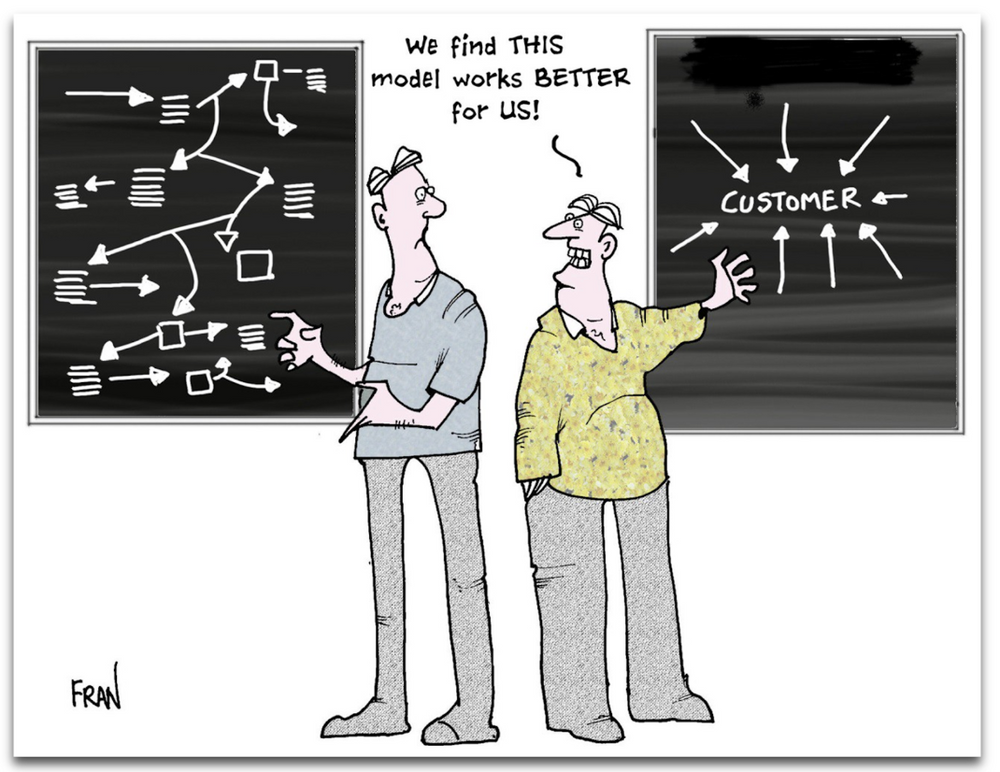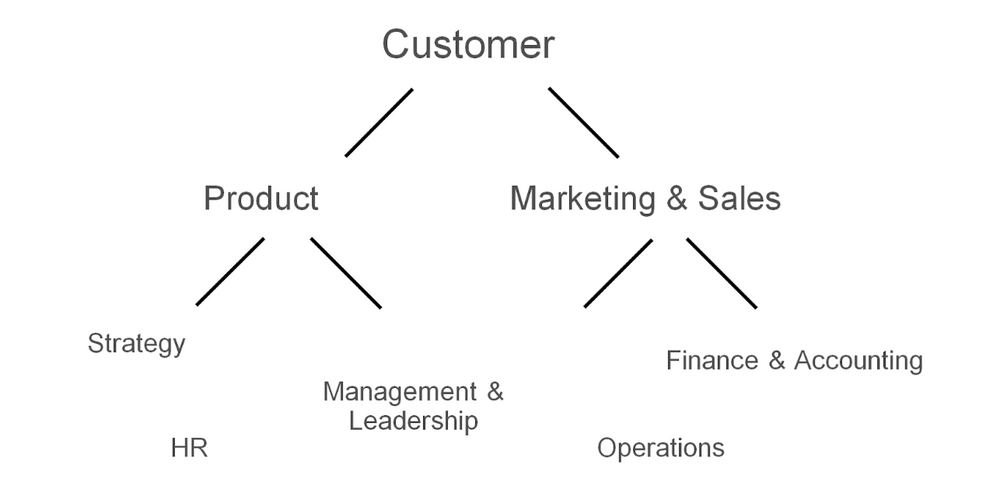- Quick Summary
- View Full Mastery Manual
- Watch Classes
- Masterclass
- Coaching Call #1
- Coaching Call #2
- Interview With Brett Kopf, Co-Founder Of Remind
- Other Resources
- Slides
- Navigate Mental Models On Entrepreneurship
Quick Summary
I think it’s impossible to really understand somebody, what they want, what they believe, and not love them the way they love themselves.—Ender Wiggins, Ender’s Game
One of the biggest challenges Mental Model members bring up is information overwhelm. There are so many things that you could learn as an entrepreneur or professional. How do you choose? For me, this cartoon summarizes it:

For example, I went to NYU Business School, where I spent a lot of time and money studying business through a variety of lenses and disciplines. It’s an extremely complex subject: how to run a business. Strangely, in all this complexity, there is almost no conversation about how to understand your customer. And as a result, my early years as an entrepreneur were extremely difficult.
Our current academic and scientific mindset actually prevents people from developing their muscles around thinking like a customer. Paradoxically, a lot of brilliant people study business and entrepreneurship objectively. When you’re objective, it doesn’t cross your mind to think subjectively and try to empathize with other people. It's a big blind spot in our education.
Sometimes, it’s easy for the simplest ideas to get lost in complexity. One of my favorite quotes from Charlie Munger is to “take simple ideas seriously.”
“Think like a customer” is a simple idea/skill. It’s also the key skill you need in order to go get customers.
If you look at all the aspects and disciplines involved in leading a business, you can narrow them down to product and marketing.

But in order to create a product people want and market it in a way people understand, you first have to understand the customer.
The aim of marketing is to know and understand the customer so well the product or service fits him and sells itself.―Peter Drucker
This is the 80/20 of business...
View Full Mastery Manual

Think Like A Customer Mastery Manual.pdf
Last modified by Jelena Radovanovic 3 years ago
drive.google.com
Watch Classes
Masterclass
Coaching Call #1
Coaching Call #2
Interview With Brett Kopf, Co-Founder Of Remind
Other Resources
Slides
Keynote
Keynote makes it easy to create beautiful presentations. Work together in real time on a Mac, iPad, or iPhone-or use Keynote on iCloud.com.
www.icloud.com

Navigate Mental Models On Entrepreneurship

The rookie mistake many business owners make in their marketing is to just promote themself. Instead, you should work on educating your prospects. Once you educate them on how things work in your domain and what it’s like to work with you, they’re more likely to develop trust in you and buy your products or services.

“Think like a customer” is a simple idea/skill, and it’s also the key skill you need in order to get customers. In order to create a product people want and market it in a way people understand, you first have to understand the customer. This manual will help you understand how.

How can I get in front of as many eyes as possible and get as many people as I can to know about my work, my projects, and the services or products I offer, all with minimal costs? That’s the challenge this model addresses.

In many ways, humans are designed for social conformity. Conforming is easier, and it works 99% of the time. An original thinker, however, knows that social and expert authority is often right, but that it can also be incredibly wrong too. So, the original thinker looks for holes in the consensus view and capitalizes on them. This model shows how you can do it too.

This model aims to help you get published on top sites in your niche, write articles that go viral, build your business completely off of content (if you want), get people knocking on your door to work with you, and scale the number of people you reach.

As we're moving into this increasingly changed future, in which we seem to be living out Ray Kurzweil’s Law Of Accelerating Returns, we’ve noticed that the opportunity follows certain patterns. In this manual, we discuss six principles of opportunity to help you build a model of how it works and how it evolves through time.

When you have a product or you're buying a product, you can look at it through the metaphor of your hiring the person to do a job for you, and that job could have functional aspects and emotional aspects.

When it comes to rapidly changing environments, forget the 10,000-Hour Rule. Thomas Edison, Jeff Bezos, Mark Zuckerberg, and other great innovators follow the 10,000-Experiment Rule, and you can start with it with the help of this manual.

The offer isn’t the only thing that makes something sell. A lot of times, especially in a smaller company or startup, a lot of what people are buying is not just the product — in many ways, they are buying you. So in this manual, we’re going to talk about selling you.

Why and how you should be reinventing yourself with the customers, your marketing, and your product.

Customer focus is a series of four models rather than a standalone model, and Total Customer Focus model is one of the cornerstones.

/w=256,quality=90,fit=scale-down)
